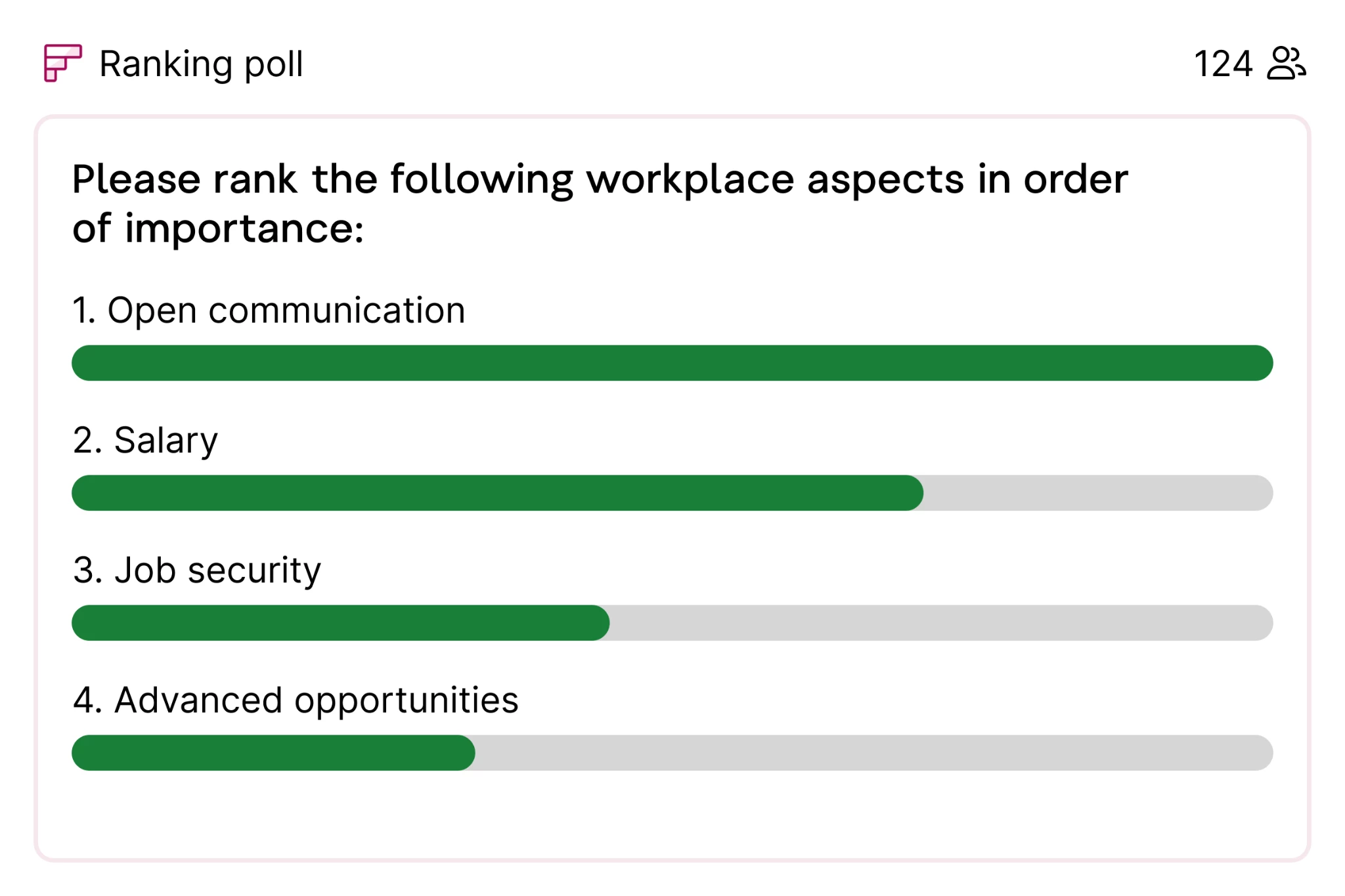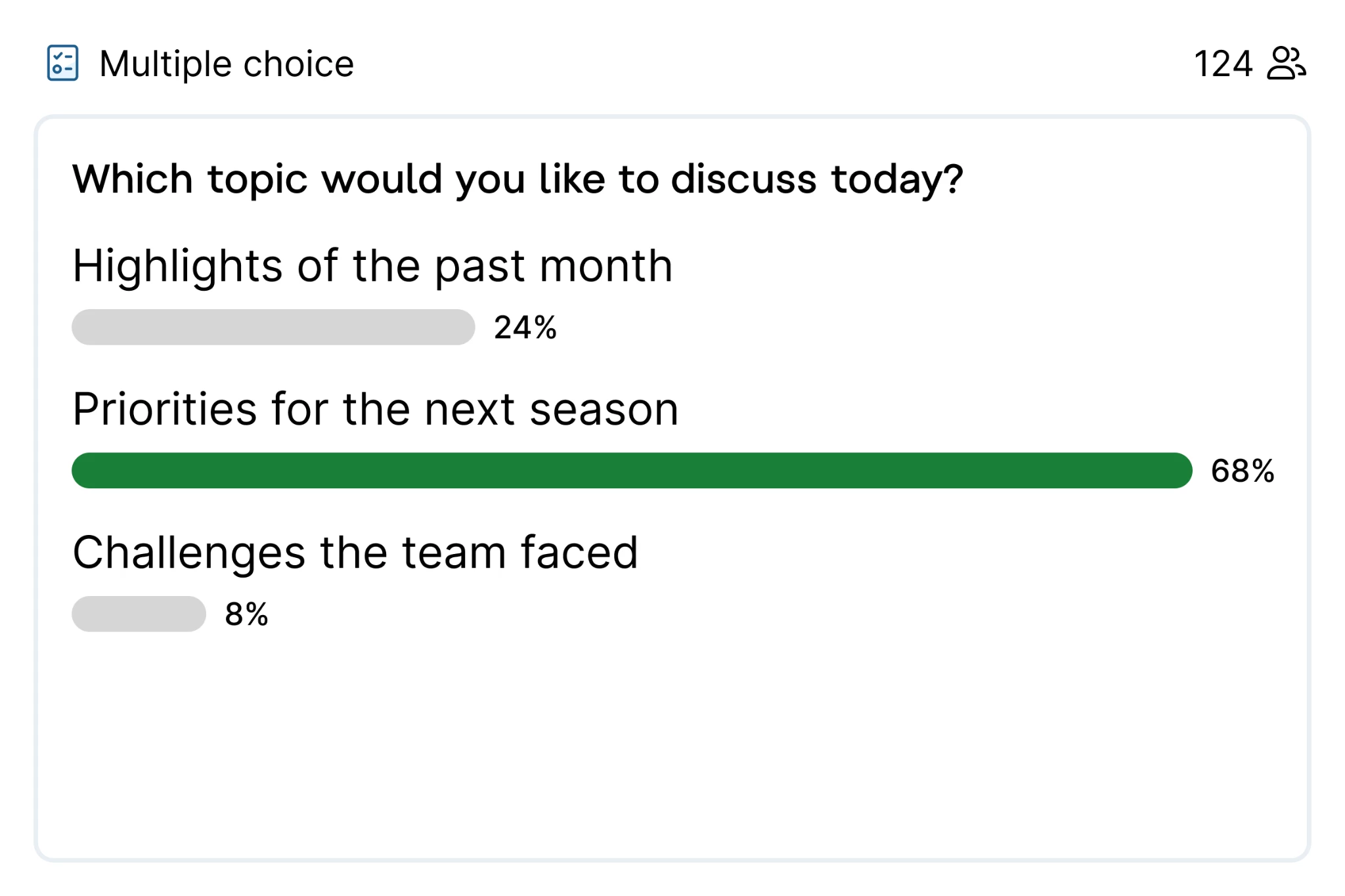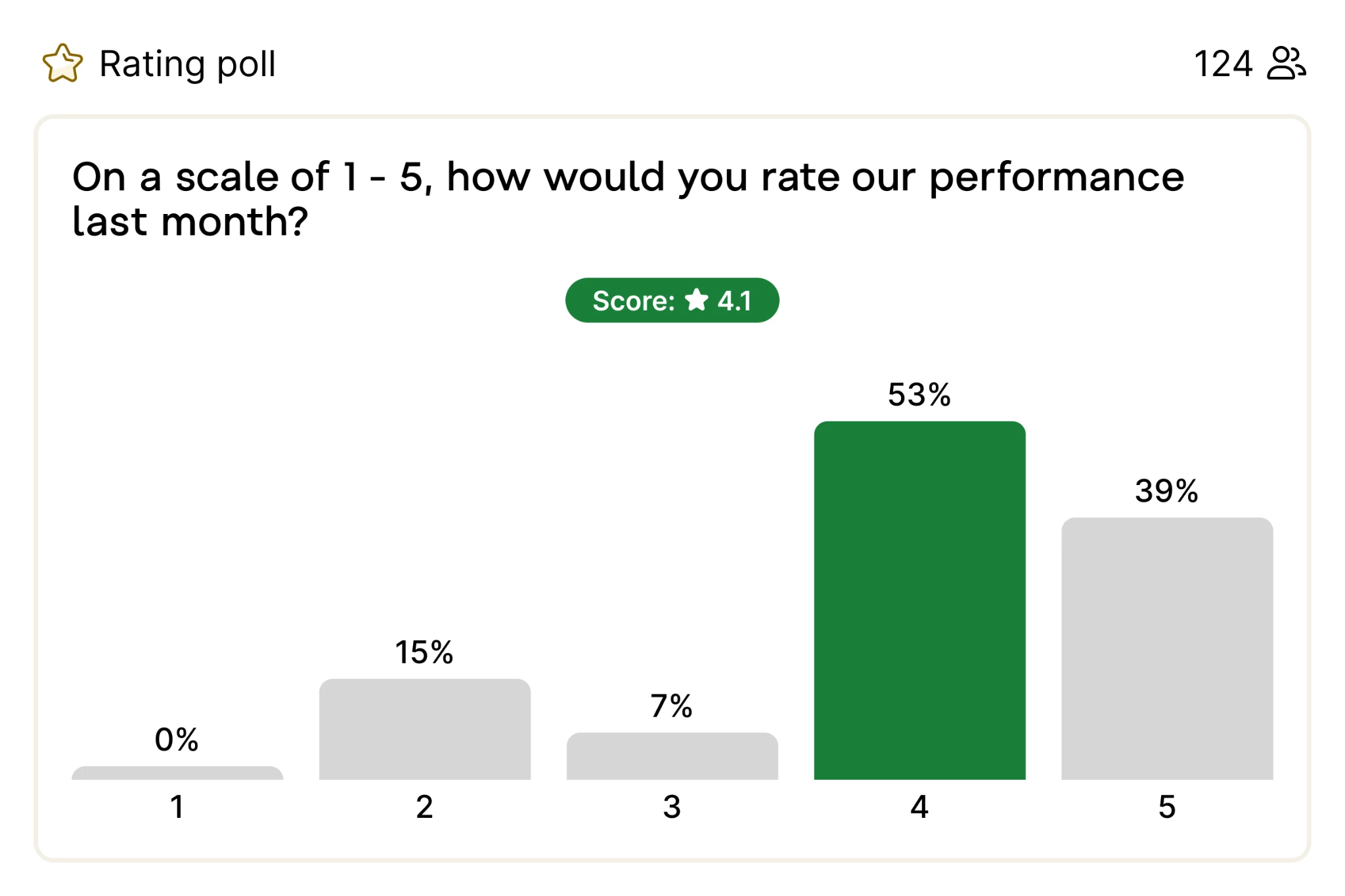Making a decision as a team can be difficult, especially in a hybrid setup or video conferencing environment. Instead of extended back and forth discussions with people talking over one another, put an item to a vote using Slido polls.
With Slido, each person has an equal opportunity to have a say – plus, you’ll see the results instantly. No matter if there are 10 or 1,000 people participating, you'll be able to collect opinions from each and every one of them – no matter if they are remote or onsite.
In this guide, you will learn how to use Slido to help you simplify your team decision-making process, give everyone an equal voice, and save time while doing so.
Common challenges
Groupthink and internal politics
- Confirmation bias: Participants tend to avoid conflict and agree with the most popular ideas rather than challenging them.
- Top-down decision-making: People in certain positions or roles can seem to hold more influence over decisions.
- Workplace politics: Some people may try to push their own ideas or sway the decision in their favor.
Inefficiency
- Lengthy discussions: Group can progress very slowly, thus coming to a decision often takes a long time.
- Misalignment: With multiple people involved in the decision-making, there may be some misalignment due to different perspectives.
- Unclear outcomes: Amid the discussions, it is often unclear what progress was made or if a decision was ever reached.
Lack of inclusion
- Difficult for remote or hybrid teams to participate: Making a decision online is challenging – people may not speak up, worried they’ll be talking over someone.
- Lack of democratic principles: People simply aren't given a voice to express their opinion in decisions affecting their team.
How Slido can help
Impartiality
- Democratic and fair voting: Voting in a poll makes the decision making process more democratic - participants can even vote anonymously if they wish.
- Unbiased decisions: Every vote holds the same weight, regardless of one's role or influence within the organization structure.
Speed and efficiency
- Save time: Polls allow you to collect input instantly and at scale which saves you valuable time for discussion.
- Decision is made collectively: Misalignment is reduced as everyone has an equal chance to be involved.
- Clear outcomes: Everyone can see the results, which ensures the voting is transparent and the outcome is supported by the team's majority.
Inclusive and remote friendly
- Easy for remote colleagues to join: Include everyone no matter where they are joining from.
- Asynchronous decision-making: Collect votes before, during, or even after the meeting – giving everyone a voice no matter their timezone.
- Each voice can be heard: All voting is done via participants’ devices so even the most soft-spoken voices are heard.
Poll options and templates
Ranking poll
Let your participants rank their top choices and see how the results compare.

Why use it?
With a ranking poll, you’ll get a prioritized list of your meeting attendees' choices. This gives you insight into their preferences. You'll have a clear picture of which options were the most popular.
Examples:
- Which projects should we prioritize this quarter?
- What gift should we be giving our business partners?
- On which day should we be having our weekly syncs?
Multiple choice poll
Let your participants select their preferred choice.

Why use it?
If you need to make a clear decision, put all of your options into a multiple choice poll and let your meeting participants vote their preference – you'll usually see the winning result straight away. In case you have a tie, remove the losing options, discuss and vote again.
Examples:
- Which of these design proposals do you prefer?
- Should we keep our Wednesday syncs? Yes/No
- How should we measure the success of this project?
Rating poll
Take a pulse check on the point of discussion

Why use it?
A rating poll allows you to “read the room” and check the overall opinion or feeling of your meeting’s attendees. This gives you the chance to start a discussion. Or on the contrary, if you learn that everyone is on the same page, you can move on to the next item on the agenda.
Examples:
- On a scale of 1-6, how excited are you about this opportunity?
- How happy are you about this decision?
- 1-10, how much is this project in line with our current company strategy?
Curious about more?

